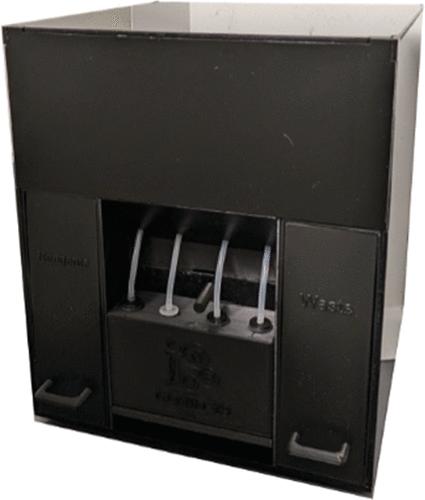QBox: An Automated Portable System for Multiplex Quantum Dot Barcode Diagnostics
IF 16
1区 材料科学
Q1 CHEMISTRY, MULTIDISCIPLINARY
引用次数: 0
Abstract
The COVID-19 pandemic accelerated the development of automated systems for detecting molecular targets for the point-of-care. However, these systems have limited multiplexing capabilities because of the need to alter their hardware to accommodate additional targets and probes. Quantum dot barcodes address this multiplexing obstacle, but their assays have multiple steps that rely on extensive training and laboratory equipment. Here, we built a portable cartridge-and-instrument system that automates the extraction, reverse transcription, amplification, and detection steps of a quantum dot barcode assay. This entire workflow can be completed in 40 minutes. We clinically validated the system with SARS-CoV-2 patient samples (n = 50, 92% sensitivity, 100% specificity). We then demonstrated multiplexing with 4-barcode respiratory and 5-barcode bloodborne pathogen panels. Our portable system opens quantum dot barcodes for broad use in rapid multiplexed detection of infectious pathogens with the potential for detecting cancer and other genetic diseases.

QBox:用于多重量子点条形码诊断的便携式自动化系统
COVID-19 大流行加速了用于护理点分子靶标检测的自动化系统的发展。然而,这些系统的复用能力有限,因为需要改变硬件以适应额外的靶标和探针。量子点条形码解决了这一复用障碍,但它们的检测有多个步骤,需要大量的培训和实验室设备。在这里,我们建立了一个便携式盒式仪器系统,能自动完成量子点条形码检测的提取、反转录、扩增和检测步骤。整个工作流程可在 40 分钟内完成。我们用 SARS-CoV-2 患者样本对该系统进行了临床验证(n = 50,灵敏度 92%,特异性 100%)。然后,我们演示了 4 条形码呼吸道病原体和 5 条形码血源性病原体的多重检测。我们的便携式系统将量子点条形码广泛应用于传染病病原体的快速多重检测,并有可能用于癌症和其他遗传疾病的检测。
本文章由计算机程序翻译,如有差异,请以英文原文为准。
求助全文
约1分钟内获得全文
求助全文
来源期刊

ACS Nano
工程技术-材料科学:综合
CiteScore
26.00
自引率
4.10%
发文量
1627
审稿时长
1.7 months
期刊介绍:
ACS Nano, published monthly, serves as an international forum for comprehensive articles on nanoscience and nanotechnology research at the intersections of chemistry, biology, materials science, physics, and engineering. The journal fosters communication among scientists in these communities, facilitating collaboration, new research opportunities, and advancements through discoveries. ACS Nano covers synthesis, assembly, characterization, theory, and simulation of nanostructures, nanobiotechnology, nanofabrication, methods and tools for nanoscience and nanotechnology, and self- and directed-assembly. Alongside original research articles, it offers thorough reviews, perspectives on cutting-edge research, and discussions envisioning the future of nanoscience and nanotechnology.
 求助内容:
求助内容: 应助结果提醒方式:
应助结果提醒方式:


